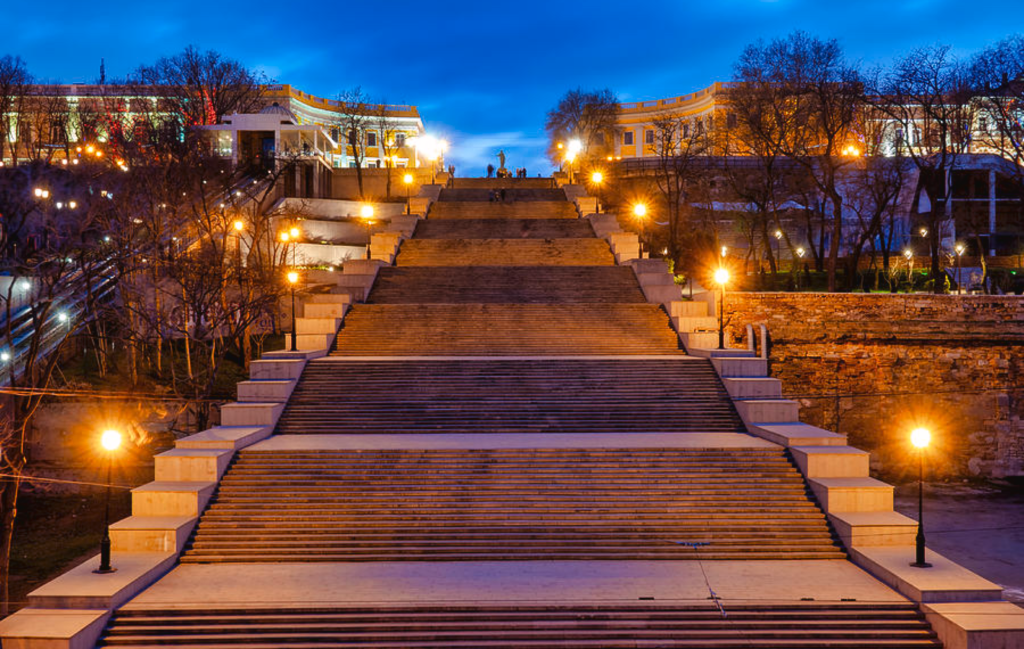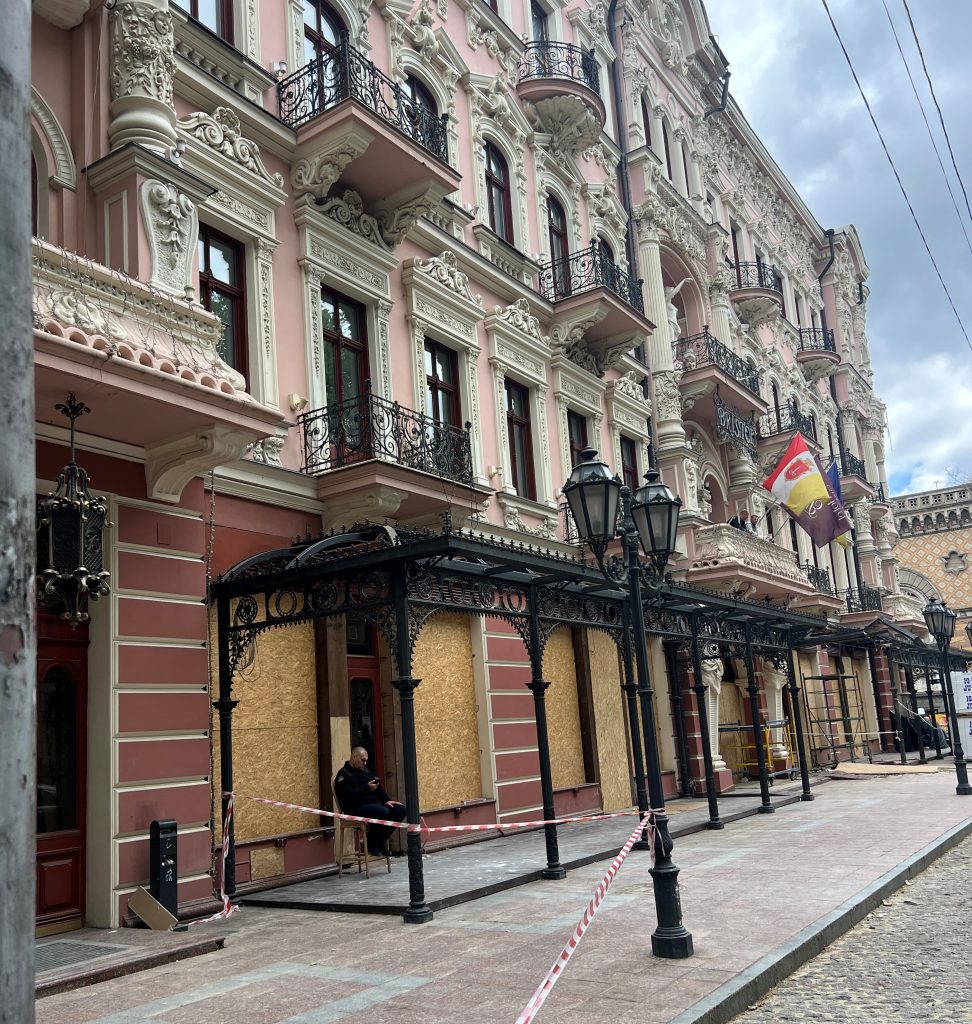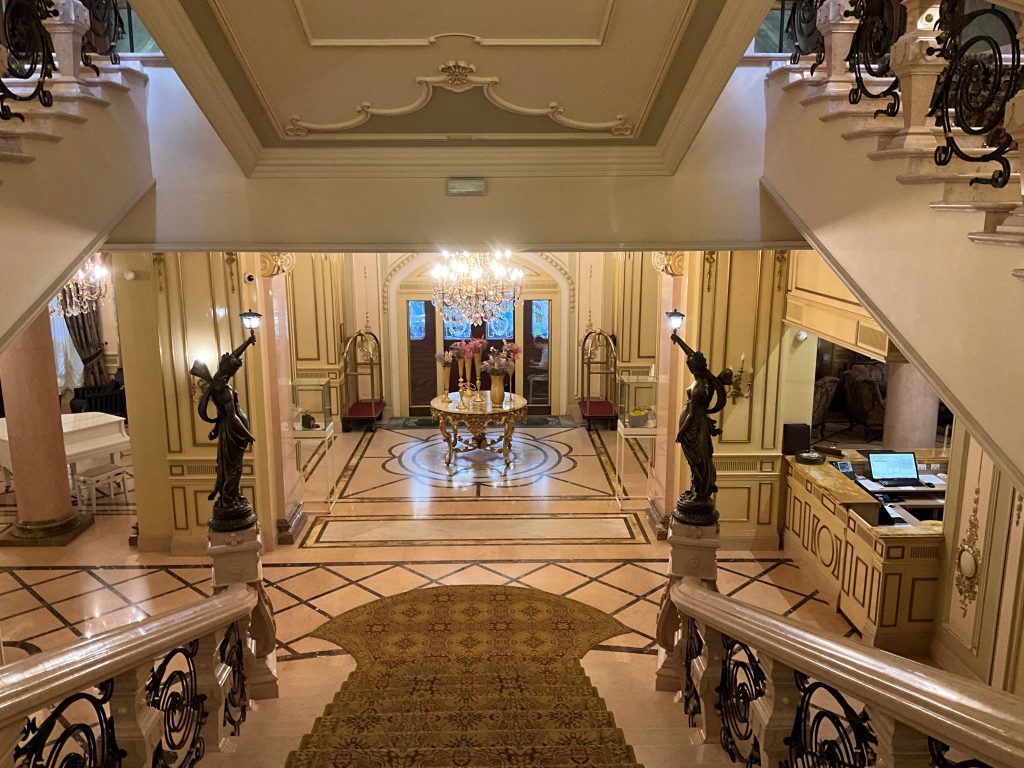We took the 4-hour drive from Moldova to Odesa. Uneventful. Easy drive. What strikes you is the beauty of the land. Fertile farmland dotted by small villages (some more modern than others). Border crossing was easy, and we look forward to our time here.

Now I’m gonna cheat and use CHAT GPT – AI and my new ‘best friend” 🙂 to give you a brief history of Odesa:
Odesa isn’t just a port city—it’s a survivor. It’s been claimed, shaped, starved, bombed, and reborn
more times than most capitals. And yet, here it is. Still standing. Still stubborn.
The land it sits on has passed through a dozen hands—Greeks, Tatars, Ottomans—but the modern city
started in 1794, when Catherine the Great decided Russia needed a Black Sea port that could rival the
best of Europe. She named it Odesa. And unlike most Russian cities of the time, this one was built by
outsiders—Italian architects, French engineers, Greek traders.
The man who really put it on the map was Armand Emmanuel du Plessis, the Duke de Richelieu—a
French nobleman who fled the revolution in France and ended up running a Russian city. Go figure. As
governor of Odesa in the early 1800s, he brought order, built the port, and laid out the city in clean,
European lines. He turned a dusty outpost into a real hub—and his statue still stands today at the top of
the Potemkin Stairs.
By the late 1800s, Odesa was booming. It was the third-largest city in the Russian Empire, after
Moscow and St. Petersburg. Ships came in loaded with grain and left full of goods and gossip. The city
had no shortage of either.
It was always a mix of cultures—Ukrainians, Russians, Jews, Greeks, Armenians, Italians. Sometimes
they got along, sometimes they didn’t. But they all helped shape the place. Odesa had a reputation for
quick wit, fast deals, and a kind of cheerful disregard for authority.
Then came the darker chapters. The Holodomor hit hard. The Nazis and Romanians occupied the city
during WWII and murdered tens of thousands—especially in the Jewish community. The scars of that
time still run deep.
In the Soviet years, Odesa was a closed naval city—strategic, secretive, and swarming with black
market deals. Even behind the Iron Curtain, it kept its sense of humor. Writers, smugglers, and
comedians all called it home.
Since Ukraine gained independence in 1991, Odesa has tried to balance old loyalties with new realities.
It’s still vital to Ukraine’s economy, culture, and identity. And now, in the face of Russia’s war on
Ukraine, the city once again finds itself on the edge—this time not just of the sea, but of history.
Odesa is tough. It’s complicated. It’s not perfect. But it’s standing. And that’s something.
“Odesa doesn’t bow easily. Not to tsars, not to tyrants, not to time.”
We connected with Sasha, who (thankfully) came down to meet us from Kyiv and will begin our visit here. This city is “different” 😉
Here are the two pictures CHATGPT gave me, as well as one that I took of the beautiful hotel we stayed at last time, The Bristol, which got hit by a Russian missile since our last visit.

The famous Potemkin stairs, memorialized in the famous movie, “Battleship Potemkin” by Sergei Eisenstein, one of the classic scenes in early movie making in 1925 (Note: if you ever saw “The Untouchables” with Kevin Costner and Sean Connery, that scene with the baby stroller at Chicago’s Union Station, was a clear homage to Eisenstein)
Statue of the Duke of Richelieu at the top of the stairs

And who he was (from CHATGPT)
The Duke of Richelieu’s path to Odesa is one of those fascinating twists of European history—where exile, war, and opportunity collided.
Here’s how Armand Emmanuel du Plessis, Duke of Richelieu (1766–1822) ended up running a port city in the Russian Empire:
1. Born into Nobility in France
• He was a French aristocrat, descended from the famous Cardinal Richelieu, and inherited the title Duke of Richelieu.
• He served briefly in the royal court of Louis XVI, including time as a military officer.
2. Exiled by the French Revolution
• When the French Revolution broke out in 1789, Richelieu, like many nobles, was forced to flee.
• He became one of the so-called émigrés—royalists and aristocrats who scattered across Europe.
3. Entered Russian Service
• Richelieu found refuge in the Russian Empire, where Catherine the Great and later Tsar Alexander I welcomed exiled European aristocrats—especially if they brought talent, loyalty, and military experience.
• He served as an officer in the Imperial Russian Army, notably fighting against the Ottomans.
4. Appointed Governor of Odesa (1803)
• Impressed by his service and character, Tsar Alexander I appointed him Governor of Odesa and the surrounding region (New Russia).
• At the time, Odesa was a new and chaotic city. Richelieu brought order, European planning, and commercial ambition to the job.
• He helped lay out the city grid, expanded the port, improved sanitation, and made Odesa a thriving hub for grain exports, commerce, and immigration.
5. Returned to France After Napoleon’s Fall
• After Napoleon’s defeat, Richelieu returned to France and even served briefly as Prime Minister under Louis XVIII, helping with the political stabilization of post-Napoleonic France.
So, in short: the French Revolution exiled him, Russia gave him a second act, and Odesa became his legacy. His statue still stands in Odesa today—coattails blowing in the sea breeze, right where the steps meet the city.
And here is the Bristol hotel–wounded but still standing, and surely will be back on its feet one day. Part of a tough, resilient city and people!

And here is the Bristol from our visit last year. Beautiful, huh?

Onward!
